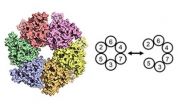(Press-News.org) ARLINGTON HEIGHTS, Ill. (August 1, 2014) – If you have asthma, you may have an asthma action plan with a "stoplight system" to help you recognize and respond to changes and understand when symptoms are getting worse and need more attention. If you're in the green zone, you're doing well, yellow means your asthma has worsened and action is needed, and red means you require urgent care. New guidelines are now available to help your allergist steer you out of the yellow zone, back into green and away from the red zone.
"Management of acute loss of asthma control in the yellow zone: a practice parameter," is published in the August issue of Annals of Allergy, Asthma and Immunology, the scientific publication of the American College of Allergy, Asthma and Immunology (ACAAI).
The practice parameter was developed for providers to help their asthma patients understand what to do in the yellow zone to prevent moving into the red zone. The recommendations are intended to help patients recognize and treat acute loss of asthma control. They apply to the home setting only; not providers' offices, emergency departments or hospital settings. The ideal intervention, according to the new parameter should "provide quick relief of symptoms, prevent progression to the red zone, be safe enough to initiate at home, be convenient and practical for self-administration, be portable so that it is always available and be cost-effective."
INFORMATION:
Ask your allergist about the new asthma parameter. For more information about asthma, and to locate an allergist in your area, visit AllergyAndAsthmaRelief.org.
About ACAAI
The ACAAI is a professional medical organization of more than 6,000 allergists-immunologists and allied health professionals, headquartered in Arlington Heights, Ill. The College fosters a culture of collaboration and congeniality in which its members work together and with others toward the common goals of patient care, education, advocacy and research. ACAAI allergists are board-certified physicians trained to diagnose allergies and asthma, administer immunotherapy, and provide patients with the best treatment outcomes. For more information and to find relief, visit AllergyAndAsthmaRelief.org. Join us on Facebook, Pinterest and Twitter. END
New guidelines help keep asthma out of 'yellow zone'
2014-08-01
ELSE PRESS RELEASES FROM THIS DATE:
Recent use of some birth control pills may increase breast cancer risk
2014-08-01
PHILADELPHIA — Women who recently used birth control pills containing high-dose estrogen and a few other formulations had an increased risk for breast cancer, whereas women using some other formulations did not, according to data published in Cancer Research, a journal of the American Association for Cancer Research.
"Our results suggest that use of contemporary oral contraceptives [birth control pills] in the past year is associated with an increased breast cancer risk relative to never or former oral contraceptive use, and that this risk may vary by oral contraceptive ...
Light pulses control graphene's electrical behavior
2014-08-01
CAMBRIDGE, Mass-- Graphene, an ultrathin form of carbon with exceptional electrical, optical, and mechanical properties, has become a focus of research on a variety of potential uses. Now researchers at MIT have found a way to control how the material conducts electricity by using extremely short light pulses, which could enable its use as a broadband light detector.
The new findings are published in the journal Physical Review Letters, in a paper by graduate student Alex Frenzel, Nuh Gedik, and three others.
The researchers found that by controlling the concentration ...
'Fracking' in the dark: Biological fallout of shale-gas production still largely unknown
2014-08-01
In the United States, natural-gas production from shale rock has increased by more than 700 percent since 2007. Yet scientists still do not fully understand the industry's effects on nature and wildlife, according to a report in the journal Frontiers in Ecology and the Environment.
As gas extraction continues to vastly outpace scientific examination, a team of eight conservation biologists from various organizations and institutions, including Princeton University, concluded that determining the environmental impact of gas-drilling sites — such as chemical contamination ...
For bats and dolphins, hearing gene prestin adapted for echolocation
2014-08-01
A little over a decade ago, prestin was found to be a key gene responsible for hearing in mammals. Prestin makes a protein found in the hair cells of the inner ear that contracts and expands rapidly to transmit signals that help the cochlea, like an antique phonograph horn, amplify sound waves to make hearing more sensitivity.
Now, in a new study published in the advanced online edition of Molecular Biology and Evolution, Peng Shi, et al., have shown that prestin has also independently evolved to play a critical role in the ultrasonic hearing range of animal sonar, ...
Scientist underlines threat of inevitable 'solar super-storms'
2014-08-01
In this month's issue of Physics World, Ashley Dale from the University of Bristol warns of the "catastrophic" and "long-lasting" impacts of "solar super-storms" and the dangers we face if the threat continues to go unnoticed.
Dale, who was a member of an international task force – dubbed SolarMAX – set up to identify the risks of a solar storm and how its impact could be minimized, explains how it is only a matter of time before an exceptionally violent solar storm is propelled towards Earth. Such a storm would wreak havoc with our communication systems and power supplies, ...
Harmful drinkers would be affected 200 times more than low risk drinkers with an MUP
2014-08-01
A new study of liver patients by the University of Southampton shows that a Minimum Unit Price (MUP) policy for alcohol is exquisitely targeted towards the heaviest drinkers with cirrhosis.
Published today in Clinical Medicine, the peer review journal for the Royal College of Physicians, the researchers studied the amount and type of alcohol drunk by 404 liver patients, and also asked patients how much they paid for alcohol. They found that patients with alcohol related cirrhosis were drinking on average the equivalent of four bottles of vodka each week, and were buying ...
Depressive symptoms and pain may affect health outcomes in dialysis patients
2014-08-01
Washington, DC (July 31, 2014) — Depressive symptoms and pain in patients on dialysis may have serious negative consequences for patients' health and increase the need for costly medical services, according to a study appearing in an upcoming issue of the Clinical Journal of the American Society of Nephrology (CJASN). The findings indicate that studies should evaluate the potential of anti-depressant and analgesic therapies to improve patient outcomes and reduce costs.
Depressive symptoms and pain are common in kidney failure patients receiving chronic hemodialysis, but ...
Molecular gate that could keep cancer cells locked up
2014-08-01
In a study published today in Genes & Development, Dr Christian Speck from the MRC Clinical Sciences Centre's DNA Replication group, in collaboration with Brookhaven National Laboratory (BNL), New York, reveal the intricate mechanisms involved in the enzyme that governs DNA duplication during cell division. By developing a sophisticated system using synthetic, chemical and structural biology approaches, the study reveals how a key enzyme involved in duplicating genetic information embraces DNA through a gated system, which opens up at precise positions allowing for a highly ...
SwRI-led team's research shows giant asteroids battered early Earth
2014-08-01
San Antonio — July 31, 2014 — A new terrestrial bombardment model developed by an international group of scientists led by Southwest Research Institute (SwRI) indicates that Earth's surface was heavily reprocessed — or melted, mixed and buried — as a result of giant asteroid impacts more than four billion years ago.
The model, calibrated using existing lunar and terrestrial data, sheds light on the role asteroid collisions played in the geological evolution of the uppermost layers of Earth during the geologic eon call the "Hadean," or first geologic eon, approximately ...
Blood and saliva tests help predict return of HPV-linked oral cancers
2014-07-31
Physicians at Johns Hopkins have developed blood and saliva tests that help accurately predict recurrences of HPV-linked oral cancers in a substantial number of patients. The tests screen for DNA fragments of the human papillomavirus (HPV) shed from cancer cells lingering in the mouth or other parts of the body. A description of the development is published in the July 31 issue of JAMA Otolaryngology – Head & Neck Surgery.
"There is a window of opportunity in the year after initial therapy to take an aggressive approach to spotting recurrences and intensively addressing ...

